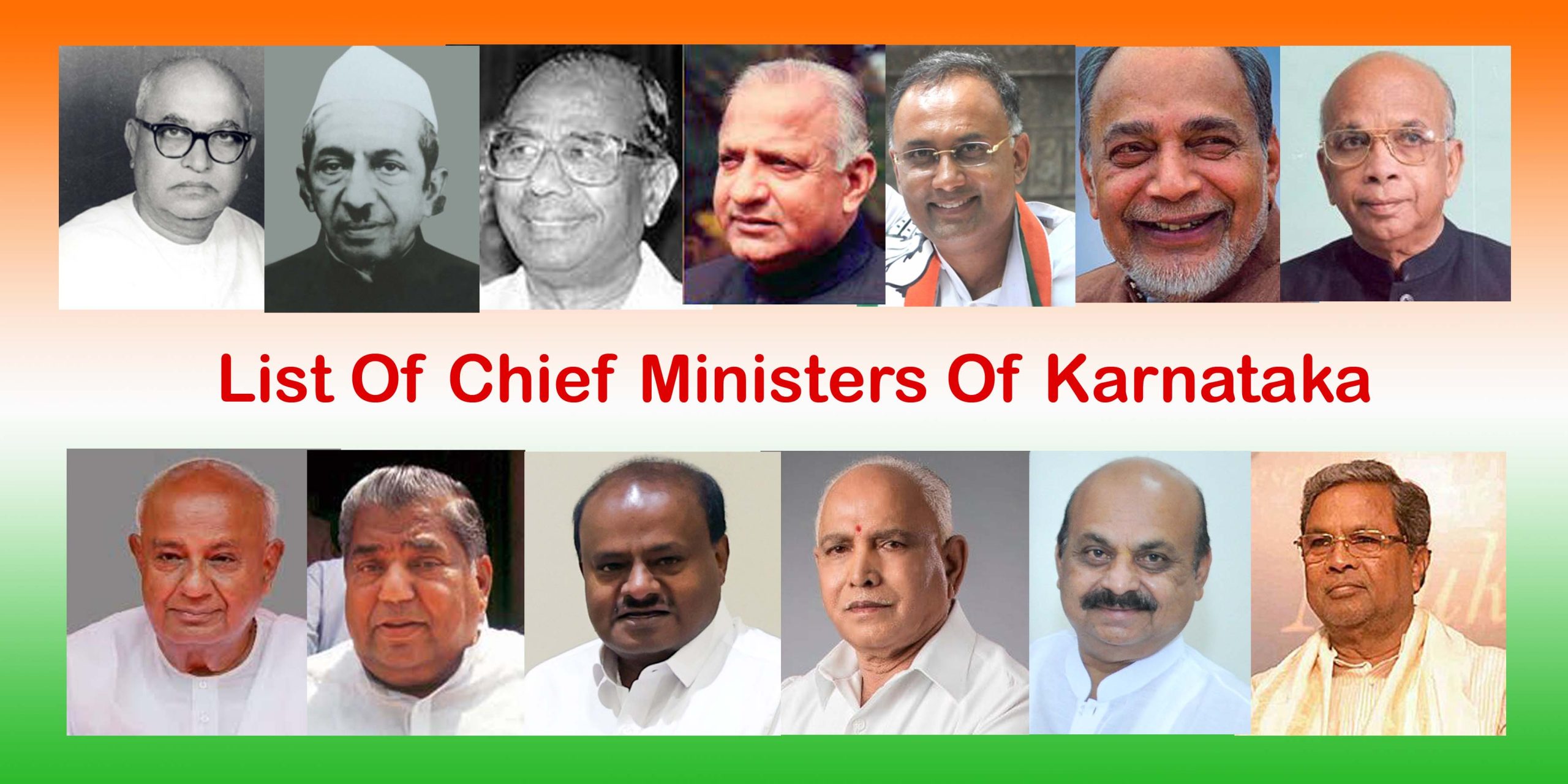
A Journey of Chief Ministers of Karnataka Since Independence
Karnataka is a fascinating place, famous for its deep history, colorful culture, and booming tech scene. What makes Karnataka so special today comes from its Chief Ministers’ hard work and intelligent decisions. Since its formation in 1956, the state has experienced a vibrant political landscape. The Chief Ministers of Karnataka Since Independence, they have taken turns guiding Karnataka through ups and downs, making big moves to help it grow, face tough times, and evolve.
In a Journey of Chief Ministers of Karnataka Since Independence, we will take a closer look at these leaders, talking about the big projects they took on, the hurdles they had to jump over, and the lasting marks they’ve made on the state.
A Journey Through Leadership: Karnataka Chief Ministers Since 1956
S. Nijalingappa (1956-1958, 1962-1968)
S. Nijalingappa became the first Chief Minister of what is now known as Karnataka. At the time, it was still called Mysore State following India’s reorganization of its states, which was a significant event. He was at the helm during those early, essential days, helping shape what Karnataka would become and laying the foundation for its growth and governance.
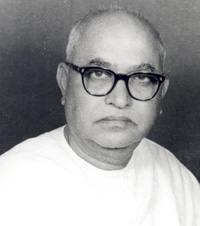
Key Contributions:
- He created a comprehensive administrative framework designed for the newly reorganized state.
- He launched infrastructure projects to enhance connectivity and development, such as expanding roads and initiating irrigation schemes.
- He introduced educational and agricultural reforms to raise productivity and educational standards throughout the state.
Challenges:
- He integrated diverse regions with varying cultural and economic backgrounds into a unified administrative framework.
- He addressed the immediate need for infrastructure and economic development in a reorganization state.
- He ensured social harmony and equitable development across different communities within the state.
Legacy: People remember S. Nijalingappa’s visionary leadership that laid down the administrative and developmental groundwork for Karnataka, fostering a path towards modernization and inclusive growth.
B. D. Jatti (1958-1962)
After S. Nijalingappa, it was Basappa Danappa Jatti’s turn to lead Karnataka, back when it was still called Mysore State. Jatti was a calm and diplomatic guy who made a difference in the early days of the state’s growth. He focused on helping people through social programs, boosting education, and building the state’s infrastructure.
Key Contributions:
- Educational Expansion: Jatti played a crucial role in broadening educational opportunities throughout the state, focusing on making education more accessible in rural areas. During his time, the state saw the creation of new schools and colleges, and he encouraged higher education for women and disadvantaged communities.
- Healthcare and Social Welfare: He prioritized healthcare services and social welfare programs, launching initiatives designed to enhance the health and well-being of the state’s residents, especially those pothealized.
- Infrastructure Development: Jatti’s government actively improved the state’s infrastructure, concentrating on road construction, irrigation projects, and water supply schemes. These efforts supported and made facilitating rural residents’ access to services more accessible.
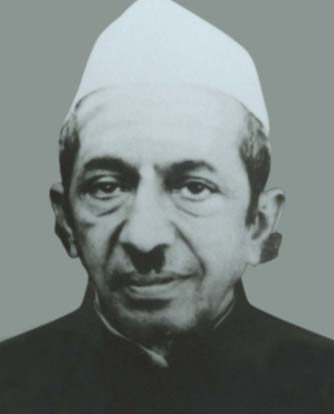
Challenges:
- Balancing Development: Jatti actively balanced the demands for swift industrialization and urban development against the need to preserve the rural economy and social welfare.
- Resource Allocation: He consistently tackled the challenge of efficiently distributing limited resources to address the varied needs of a state marked by significant rural-urban divides.
- Political Stability: Jatti navigated his era’s political landscape, managing coalition pressures and ensuring governance stability, essential for implementing his development agenda.
Legacy: People remember B. D. Jatti’s dedication to laying the foundation for a modern Karnataka, especially in areas like social welfare, education, and infrastructure. His leadership laid the foundation for future development initiatives. It significantly contributed to the socio-economic progress of the state’s residents.
Veerendra Patil (1968-1971, 1989-1990):
Veerendra Patil aimed to stabilize Karnataka’s economy and tackle big social problems. Even though politics got tricky, he focused on improving government and growing the economy.
Key Contributions:
- Implement policies that target industrial growth and infrastructure upgrades to boost economic development.
- Concentrated on reforming education to improve both its quality and accessibility statewide.
- Advanced social welfare programs aimed at healthcare, rural development, and reducing poverty.
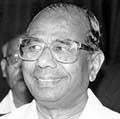
Challenges:
- Navigated political instability and maintained governance amid shifting political alliances.
- Tackled economic challenges, including managing finances and fostering sustainable development.
- Balanced industrial growth with environmental protection and agricultural sustainability.
Legacy: People remember Patil for his commitment to economic and social welfare initiatives aimed at enhancing the lives of Karnataka’s residents amid a complicated political scene.
D. Devaraj Urs (1972-1973, 1973-1977, 1978-1980)
D. Devaraj Urs was a game-changer in Karnataka. He made big moves that shook society and the economy for the better. Under his leadership, the state saw significant changes that made things fairer for everyone and helped the economy grow. His time in charge was a turning point, changing how Karnataka worked for its people.
Key Contributions:
- He carried out groundbreaking land reforms, giving land to the landless and changing the farming system to help the rural poor.
- He led the fight for social justice, working to uplift the lower classes and marginalized groups through proactive measures and reservation policies.
- It has boosted the state’s industrial foundation, drawing in investments and supporting the expansion of small and medium businesses.
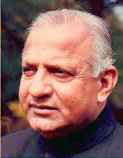
Challenges:
- He managed the socio-political fallout from widespread land and social reforms.
- They balanced economic growth with social fairness in a diverse and populous state.
- Also, they navigated through the complexities of coalition politics and governance.
Legacy: Devaraj Urs’s unwavering commitment to social fairness and justice is well-remembered. His legacy of transformative reforms continues to influence Karnataka’s social and economic landscape.
R. Gundu Rao (1980-1983)
When R. Gundu Rao was Chief Minister, he was all about bringing Karnataka into the future. He focused on boosting industries, improving education, and building the infrastructure. Under his leadership, Karnataka started moving towards becoming a more modern and growing state with new policies and projects.
Key Contributions:
- He sped up industrial development to make Karnataka an attractive place for local and international investors.
- He Expanded the education sector, with a primary focus on technical and higher education, to meet the needs of a growing economy.
- He has carried out major infrastructure projects, such as widening urban infrastructure and enhancing public utilities.
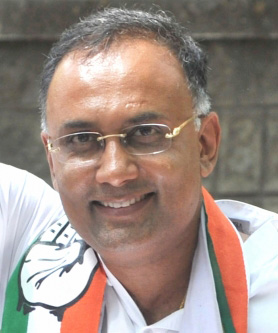
Challenges:
- Balanced rapid industrial growth with environmental and social considerations.
- Addressed regional disparities in development and resource allocation.
- Managed political challenges and governance issues in a rapidly changing economic landscape.
Legacy: Gundu Rao laid the groundwork for Karnataka’s transformation into a technology and industry hub, significantly boosting its status as a progressive and dynamic state in India.
Ramakrishna Hegde (1983-1985, 1985-1988)
Ramakrishna Hegde was all about making significant changes and moving forward. He led Karnataka with ambitious plans to reform governance, empower local governments, and enhance rural livelihoods. His time in charge is famous for really pushing for local areas to have a say and getting people involved in government decisions.
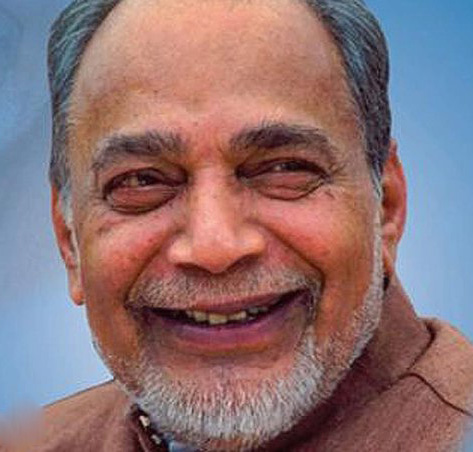
Key Contributions:
- He introduced the idea of decentralization in governance. He strengthened the Panchayati Raj institutions to allow more local involvement in development.
- Put administrative reforms into action to make government operations more efficient and transparent.
- It has pushed for policies, such as irrigation projects and support for farmer cooperatives, that would help rural development and increase agricultural productivity.
Challenges:
- Balanced the aspirations of rural and urban constituencies as the state rapidly modernized.
- Implemented governance reforms despite facing resistance from bureaucracy.
- Addressed environmental concerns while expanding both industry and agriculture.
Legacy: Hegde’s legacy primarily revolves around his efforts to decentralize governance, making it more accessible and transparent for the people of Karnataka.
S. R. Bommai (1988-1989)
Somappa Rayappa Bommai was a well-experienced politician and a top leader in the Janata Party. He became the Chief Minister of Karnataka during a rocky period in the state’s politics. Even though he didn’t have much time in office, he made significant moves to improve the state’s governance and tackle important problems.
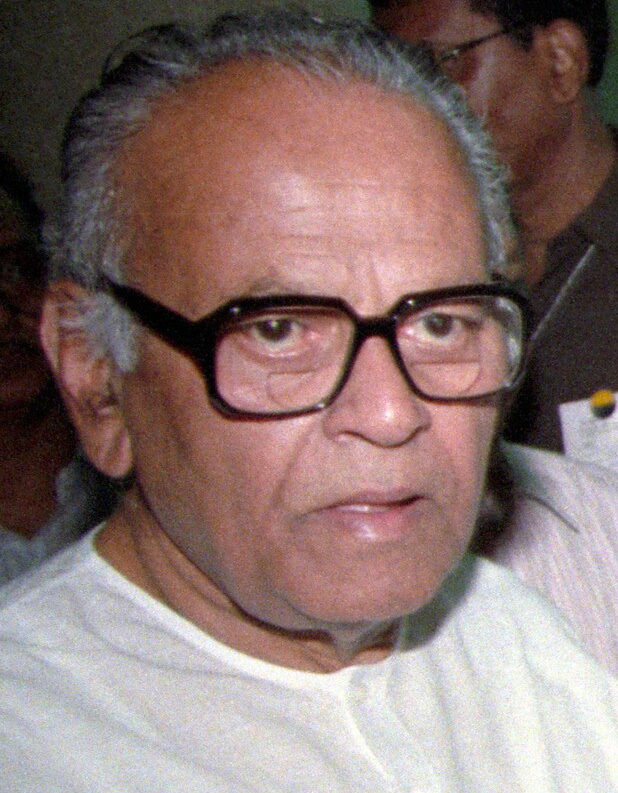
Key Contributions:
- People credit Bommai for enhancing the state’s administrative machinery with transparency and efficiency and for championing reforms in the governance structure to improve its responsiveness to the people’s needs.
- He focused on enhancing the state’s education system by improving infrastructure and access, especially in rural areas. He also emphasized improving services as part of his administration’s welfare initiatives.
- Recognizing the backbone of Karnataka’s economy, Bommai initiated several measures to support farmers, including improving irrigation facilities and policies to enhance farmer incomes and agricultural productivity.
Challenges:
- He experienced political instability and internal party challenges during his tenure, which led to his government’s dismissal following a controversial decision by the then-President of India. During the S.R. Bommai vs Union of India case, the Supreme Court invalidated the action, establishing a guideline for implementing the President’s Rule under Article 356 of the Constitution and leaving a lasting impact on India’s political environment.
- Balancing economic growth with social welfare programs can be challenging, particularly during fiscal constraints. Ensuring adequate support for agriculture and rural development while promoting industrial and urban growth requires skilled economic management.
Legacy: S.R. Bommai’s legacy stands out due to the landmark Supreme Court judgment in the case named after him, which has impacted Indian federalism and the use of President’s Rule in the states. Although his time in office was short, his efforts in governance, education, and farmer welfare reflected his dedication to addressing the immediate needs of Karnataka’s people.
Sarekoppa Bangarappa (1990-1992)
S. Bangarappa was a leader with a lot of energy and charm. He became the leader of Karnataka when the state was facing tough times economically and socially. He was known for reaching out to people in rural areas and putting in place policies that made a real difference in the lives of everyday folks.
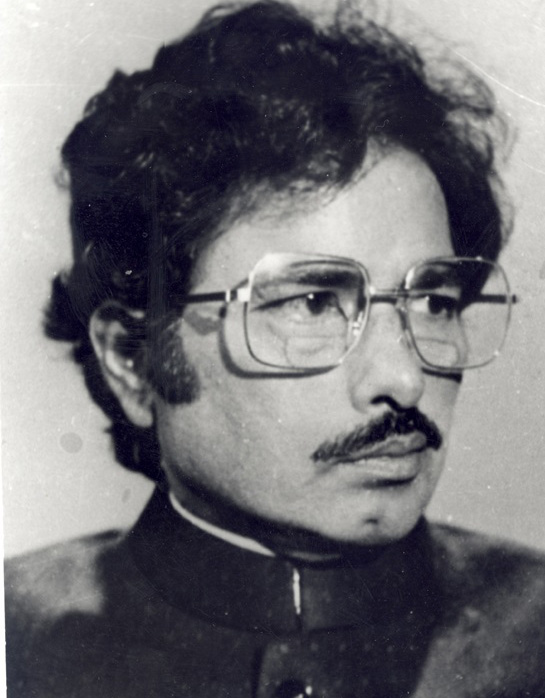
Key Contributions:
- Bangarappa’s government launched several welfare schemes targeting the poor, backward classes, and minorities, including housing schemes, health insurance, and educational scholarships. These initiatives aimed to uplift the socio-economic status of these communities.
- Understanding the importance of agriculture in Karnataka, his administration focused on improving irrigation facilities, supporting farmer subsidies, and enhancing agricultural productivity. The administration also tried to strengthen rural infrastructure, including roads and electrification, to facilitate better living conditions and economic opportunities in rural areas.
- Bangarappa prioritized infrastructure development, including transportation networks and urban development projects, to spur economic growth and improve connectivity within the state.
Challenges:
- He managed intense political dynamics during his tenure, including navigating complexities within his party and handling coalition pressures, which presented governance challenges.
- He balanced the state’s economic growth with extensive social welfare programs and infrastructure development initiatives, requiring skilled financial management, especially considering limited resources and fiscal constraints.
- It addressed regional disparities across Karnataka, given its diverse regional needs and disparities, which necessitated focused policies and programs to ensure equitable development.
Legacy: Bangarappa’s legacy remains alive due to his populist policies and emphasis on social welfare and rural development. His leadership style and the initiatives launched under his government left a lasting impact on Karnataka’s political and social landscape, especially in efforts to enhance the lives of the underprivileged and marginalized.
M. Veerappa Moily (1992-1994)
Under M. Veerappa Moily’s leadership, there was a big push for modern, forward-looking economic and societal changes. He aimed for the all-round development of the state, focusing on improving education, protecting the environment, and making intelligent financial decisions.
Key Contributions:
- M. Veerappa Moily launched the Karnataka Vision 2020 project to turn the state into a developed and forward-thinking economy by 2020.
- He brought in major reforms to boost access and quality of education across the state.
- Additionally, he put in place fiscal reforms to increase state revenue and make its financial management more efficient.
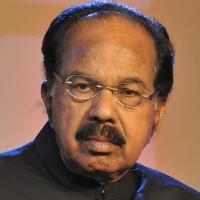
Challenges:
- He is actively implementing ambitious plans while navigating immediate political and financial pressures.
- They are striking a balance between improving financial management and supporting social and welfare programs.
- Also, they confront environmental issues stemming from rapid industrial and urban growth.
Legacy: Moily earns praise for his visionary leadership and dedication to establishing a long-term development agenda for Karnataka that emphasizes sustainability, education, and fiscal stability.
H.D. Deve Gowda (1994-1996)
Before becoming India’s Prime Minister, H.D. Deve Gowda was the Chief Minister of Karnataka. He was well-known for his grasp of farming issues in the state and his dedication to improving life in rural areas.
Key Contributions:
- He focused on helping rural communities and farmers by introducing farming policies and water projects.
- He aimed to improve roads, bridges, and other basics in rural areas to ensure everyone had the same chance to succeed.
- He pushed for programs that help raise the quality of life for less well-off people.
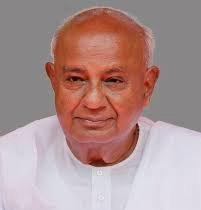
Challenges:
- They are finding a fair balance between the needs of people living in cities and those in the countryside in a growing and changing state.
- They are getting farm and rural improvement projects done without spending more money than the state can afford.
- Additionally, he cares for nature while supporting the growth of factories and farming.
Legacy: Deve Gowda is famous for his commitment to helping farmers and improving rural areas. He made a significant, lasting difference in how Karnataka supported agriculture and built its countryside.
J. H. Patel (1996-1999)
While J.H. Patel was the Chief Minister of Karnataka, he took a practical approach to managing the economy and running the government, concentrating on growing the industry and farming sectors. He led to opening up the state’s economy and attracting private money into it.
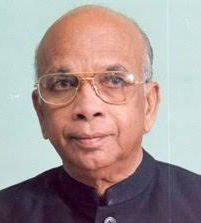
Key Contributions:
- He pushed for opening up the economy and made Karnataka a welcoming place for investors from India and abroad.
- He made changes in the electricity sector to fix shortages and promote more intelligent use of power.
- He backed policies that helped farmers, like water projects and support for farmer groups.
Challenges:
- He is steering Karnataka’s economy through tough times caused by significant changes in the country’s economy and global trade.
- They ensure the industry grows without harming the environment or ignoring farming needs.
- They keep up with what different groups of people want during fast economic shifts.
Legacy: Patel is known for guiding Karnataka through an essential period of economic change, setting the stage for later growth, especially in industries.
S.M. Krishna (1999-2004)
While S.M. Krishna was Chief Minister, he concentrated on improving Karnataka’s cities, especially making Bangalore a global hub for I.T. He played a crucial role in opening up the world economy and bringing in money from other countries.
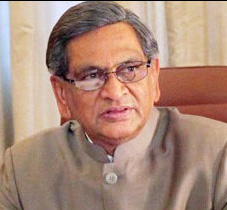
Key Contributions:
- He was vital in making Bangalore a global spot for I.T. and outsourcing.
- He started projects to improve city life and connect places more easily, like the Bangalore Metro.
- He introduced rules to attract investments from other countries, helping to grow the state’s industry and I.T. fields.
Challenges:
- He is handling Bangalore’s fast city growth and the significant needs of an expanding I.T. industry.
- Making sure development in cities pays attention to the countryside and farming communities.
- They keep growth green and sustainable while dealing with environmental issues from quick industrial expansion.
Legacy: Krishna is famous for turning Karnataka into a world-leading I.T. hub, significantly boosting its economy and putting it on the world map.
Dharam Singh (2004-2006)
Dharam Singh led Karnataka as Chief Minister during a crucial period of coalition politics. Despite the challenges of leading a coalition, his time in office was all about commitment to good governance and development. He skillfully mixed his experience and practical approach to push Karnataka forward.
Key Contributions:
- Singh worked hard to make the government run more smoothly and openly, changing its operations to improve them and increase transparency.
- He significantly contributed to improving the state’s infrastructure, such as roads, water projects, and city improvements, aiming to boost the economy and facilitate the connection of people and places in Karnataka.
- He started and supported many programs to improve the health, education, and living conditions of people who weren’t wealthy, especially in rural areas. He made sure everyone received a portion of the state’s growing success.
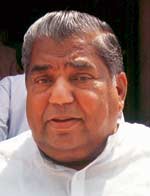
Challenges:
- Dealing with a coalition government was challenging because of different ideas and priorities, making it hard to govern smoothly and implement policies.
- Managing the state’s finances while undertaking extensive infrastructure and social welfare projects was tricky, requiring brilliant handling to ensure ongoing strong development.
- Bridging the gap between the city and the countryside was crucial, ensuring people living in rural areas could also benefit from the state’s progress.
Legacy: People remember Dharam Singh for his fairway leadership, which always considered including everyone in development. Even with the challenging situation of coalition politics, his time in charge saw significant improvements in building up the state and helping those in need, assisting Karnataka to move forward. Singh is known as a leader who made the effort to ensure everyone got a fair share of Karnataka’s success, setting the stage for more good changes in the state.
H.D. Kumaraswamy (2006-2007, 2018-2019)
H.D. Kumaraswamy, famous for his people-friendly policies, has been Chief Minister twice. He has put a lot of effort into improving life in rural areas, helping farmers, and starting social welfare programs. He has focused on helping people living in the countryside and those who don’t have much money.
Key Contributions:
- He brought in programs to cancel farmers’ loans, helping to ease their financial troubles.
- He prioritized rural development, working on better water and cleanliness projects, countryside roads and buildings, and healthcare services.
- He started many programs to help raise the quality of life for poor and sidelined people.
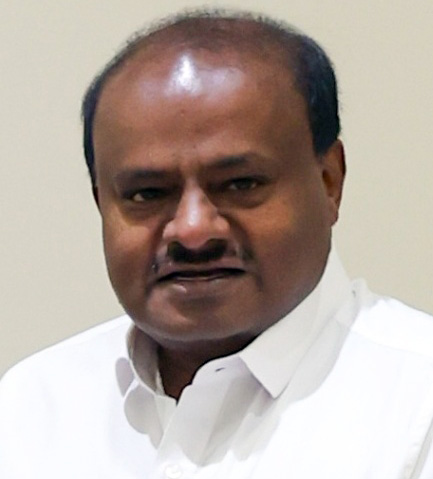
Challenges:
- It is balancing keeping a tight budget and rolling out popular help programs.
- They are dealing with the tricky parts of leading a coalition government and keeping things stable politically.
- Ensure every part of Karnataka, even the ignored and dry areas, gets its fair share of development.
Legacy: People remember Kumaraswamy’s time in office for his intense focus on helping farmers and improving rural areas, trying to lessen gaps between different groups and support those in need.
B.S. Yediyurappa (2007, 2008-2011, 2018, 2019-2021)
B.S. Yediyurappa is a big name in Karnataka politics and an essential leader in the state’s Bharatiya Janata Party (BJP). He has been Chief Minister of Karnataka several times. His leadership played a significant role in deciding the state’s political direction and growth path, focusing on boosting the economy, building infrastructure, and improving social welfare.
Key Contributions:
- Yediyurappa worked hard to boost Karnataka’s economy, focusing on growing industries and bringing investments to the state.
- He introduced policies that attracted money from inside and outside the country, especially in I.T., biotech, and manufacturing.
- He also made significant progress in building the state’s infrastructure, including expanding roads, developing metro rails, and starting water projects that helped farmers and made traveling easier.
- In addition, his government started many programs to help with health, education, and support for less fortunate people, ensuring everyone could benefit from the state’s progress.
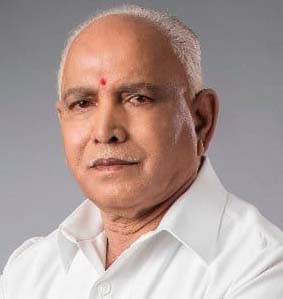
Challenges:
- Yediyurappa’s time in office has included his fair share of political hurdles, like handling coalition governments and dealing with issues within his own party, which sometimes made governing and initiating policies tough.
- He also had to deal with the aftermath of natural disasters like floods and droughts while trying to grow industries without hurting the environment too much.
- Managing the state’s money was a big task, too. He had to ensure that big projects for building things and helping people could proceed without spending too much, all while coping with ups and downs in the world economy and needs from different parts of the state.
Legacy: B.S. Yediyurappa has significantly impacted Karnataka’s politics and growth story. Famous for his strong leadership and focus on development, he’s made lasting changes in the state, especially in boosting the economy, building better infrastructure, and improving social welfare. His work to make Karnataka a top state in India for industry growth and tech advancements stands out.
D. V. Sadananda Gowda (2011-2012)
D. V. Sadananda Gowda became a leader during a time of political change. He concentrated on improving government and building infrastructure like roads and bridges to keep the state moving and growing.
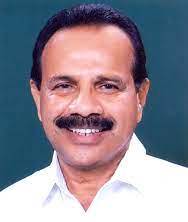
Key Contributions:
- He put much effort into building projects, like improving cities and improving roads.
- He pushed for an open government that worked well to restore people’s faith in the administration.
- He paid particular attention to health and education, ensuring that these services were accessible and of good quality.
Challenges:
- He is dealing with the ups and downs within his party and political issues to keep the government stable.
- Meeting the needs of a booming economy but ensuring growth doesn’t hurt the environment.
- Making sure cities grow balanced without forgetting about the countryside and helping farmers.
Legacy: Even though Gowda wasn’t in office for long, people remember him for trying to improve how the government works and concentrating on building things, which helped the state keep moving forward.
Jagadish Shettar (2012-2013)
As chief Minister, Jagadish Shettar worked hard to meet Karnataka’s development needs despite political hurdles. His leadership aimed to boost industry, improve rural areas, and build better infrastructure.
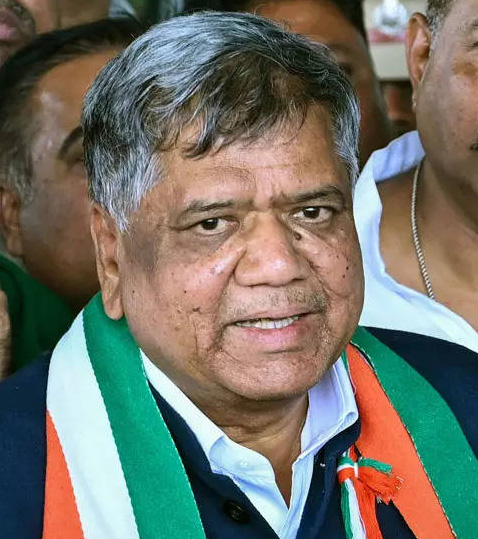
Key Contributions:
- He started programs to increase industry growth and attract more investments to the state, especially in manufacturing and information technology.
- He executed projects to enhance roads and urban planning.
- He supported rural development plans to make farming more productive and manage water resources better.
Challenges:
- He ran the government smoothly despite political ups and downs and divisions in his party.
- Ensuring all parts of the state developed relatively, especially fixing uneven growth in different areas.
- They are dealing with the tricky task of growing the economy while caring for the environment and people’s well-being.
Legacy: Shettar’s legacy involves promoting industry and infrastructure growth and striving to ensure that Karnataka’s development is balanced and meets everyone’s needs.
Basavaraj Bommai (2021-2023)
Basavaraj Bommai assumed office as the Chief Minister of Karnataka in 2021, taking charge amidst the challenging circumstances of the COVID-19 pandemic. His leadership was crucial as the state had to manage health concerns and get the economy back on track. With his engineering background and family ties to former Chief Minister S.R. Bommai, Bommai took a practical approach to running things, relying on technology and good management to guide Karnataka through these challenging times.
Key Contributions:
- COVID-19 Response: Bommai’s team prioritized tackling the COVID-19 crisis by efficiently managing healthcare, running vaccination campaigns, and helping people affected by the pandemic. They also worked hard to strengthen hospitals and ensure enough medical supplies and beds.
- Economic Recovery: Knowing how much the pandemic hurt businesses, his government focused on ways to get the economy back on track. They supported companies, offered financial help, and worked to bring in investments, especially in tech, manufacturing, and clean energy.
- Building Up the State: They kept pushing to improve things like water management, city planning, and transportation to help the economy grow and make life better for people in Karnataka.
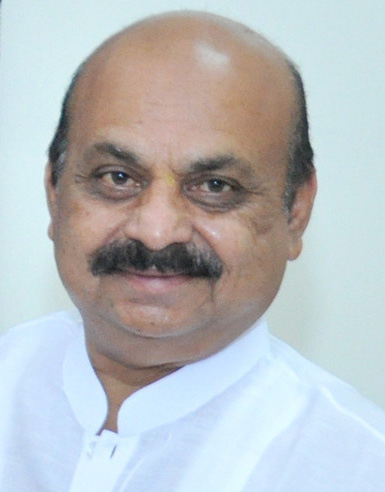
Challenges:
- Managing the Pandemic: Steering the state through the health and economic problems caused by COVID-19 was a big job. They had to act fast and devise good plans to keep people safe and help the economy recover.
- Juggling Growth and Green Goals: They had to think about the environment while also working on building up industries and infrastructure. It was especially tough with climate change and the need to stick to sustainable development goals.
- Handling Politics and Administration: Leading a state with many different political views, social situations, and economic setups was no easy task. They had to maintain smooth operations while also innovating new methods for improvement.
Legacy: Basavaraj Bommai’s time in office stands out for his leadership during challenging health and economic problems. His work in handling the COVID-19 pandemic and his focus on getting the economy back on track and building up infrastructure are significant parts of what he’s remembered for. As a leader who stepped up during a hard time, Bommai’s efforts to guide Karnataka towards improvement and growth while setting the stage for future improvements show his dedication to serving the public and leading well.
Siddaramaiah (2013-2018, 2023-Present)
Siddaramaiah, Minister recently, has been leading the way in Karnataka’s politics and progress, guiding the state through today’s challenges and chances. Opportunities for putting a lot of effort into helping people, growing the economy, and ensuring everyone gets a fair shot.
Key Contributions:
- He prioritized programs to help needy people, trying to lift people experiencing poverty and those left behind.
- He worked hard to improve Karnataka’s infrastructure, especially in cities, with better transportation and clean energy projects.
- He advocated forward-thinking rules in education and health, wanting more people to have suitable access and better quality.
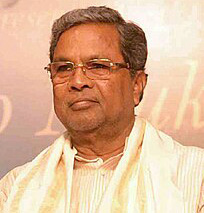
Challenges:
- Managing fast city growth while caring for the environment and helping rural areas develop.
- Figuring out how to lead in today’s complicated political world and run a diverse and proliferating state.
- Meeting the needs of a digital economy while ensuring everyone can participate, and the benefits reach everyone.
Legacy: Siddaramaiah’s time in office is all about his dedication to fairness and growing the economy. He worked hard to make Karnataka a shining example of fair leadership and intelligent growth in India.
Conclusion:
The Chief Ministers of Karnataka Since Independence shows how they had big dreams, stayed strong through tough times, and were able to change with the times. Each Chief Minister brought their own way of leading, adding to Karnataka’s reputation as a lively, forward-thinking, and varied state. Their legacies, full of successes and hurdles, keep pushing Karnataka towards a brighter future.
On Postswirl blogging site, The Chief Ministers of Karnataka Since Independence, take a closer look at their achievements. The hurdles they faced and the difference they have made in bringing the state forward.




